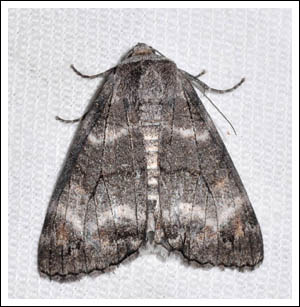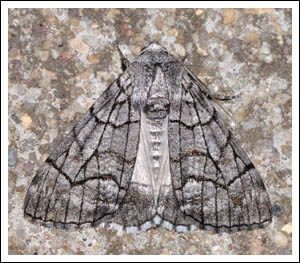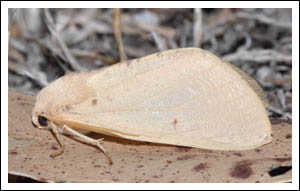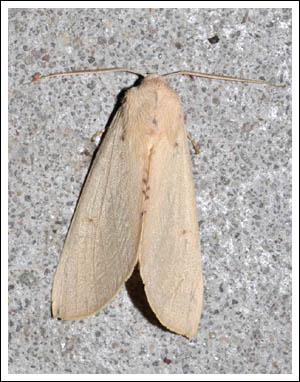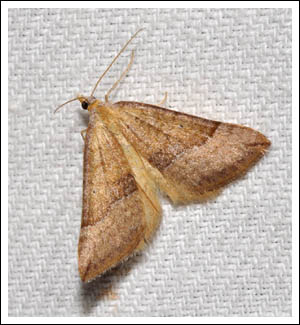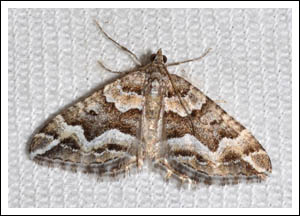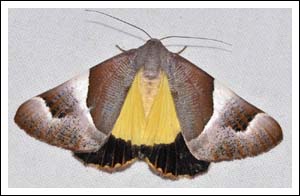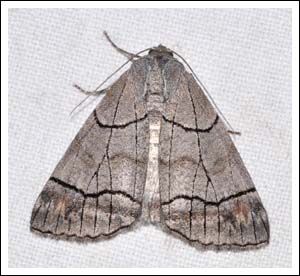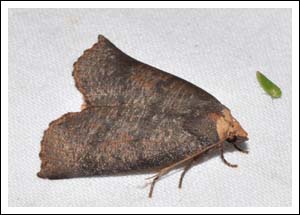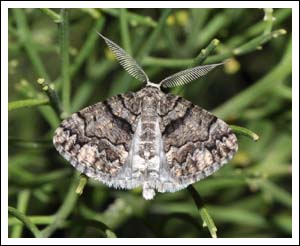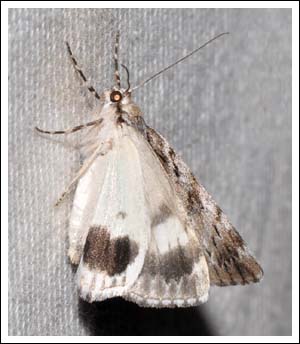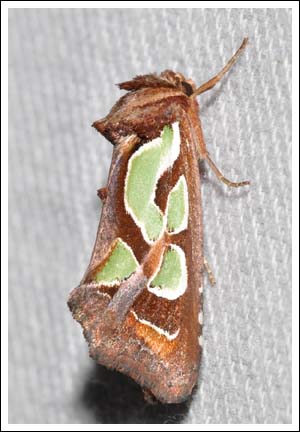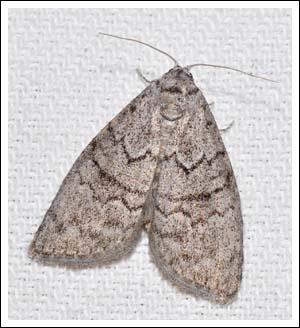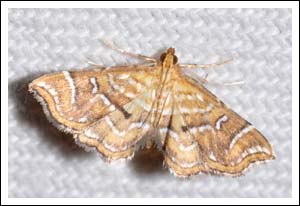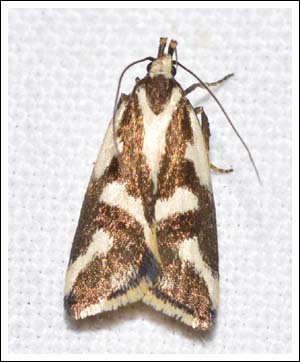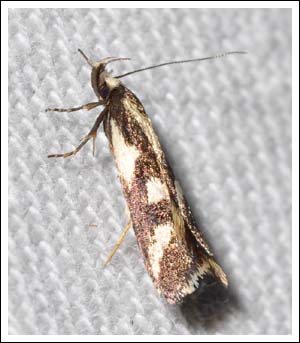With rough weather forecast, a trip up into the foothills to sample late autumn moths was postponed, and the light was set up in the shelter of the workshop, beaming out into the garden. It wasn’t long before the first moth arrived, a female Stibaroma sp. (1) (MOV) this individual is showing considerable white patching on the fore-wings. (Ennominae, Nacophorini)
Some time later a typical male arrived and settled on the concrete.
A very pale moth flew in and landed on a leaf out in the grass, it is a very pale, plain, male Lemon Gum Moth, Plesanemma fucata. (Ennominae, Nacophorini)
It refused to be transferred to the sheet so was photographed on the floor.
Moths were relatively scarce, no more of any size came in but there was interest in the smaller varieties.
The Golden Grass Carpet, Anachloris subochraria, female. (Larentiinae)
The Insigillated Carpet, Chloroclystis insigillata, (Larentiinae) Only the male has the shoulder plumes seen in this image.
Two Crambids, a very dark Tree Lucerne Moth, Uresiphita ornithopteralis.
And a Cabbage Centre Moth, Hellula hydralis.
Previous Victorian records of the Sharp-angled Carpet, Chrysolarentia actinipha, (Larentiinae) were from south and central Victoria west of Melbourne. It was a big surprise to have one come to the light from the garden here in Central Gippsland, thereby extending the known range considerably. MOV 3 notes that this is a dry country species, also present in South Australia and New South Wales. It would be interesting to know if the drying of the climate here over the last two decades has had any bearing on this species’ apparent movement east in Victoria.
All moths from the night can be seen here.
Click to enlarge.
References and further reading,
Moths of Victoria Volumes 3 and 5.

